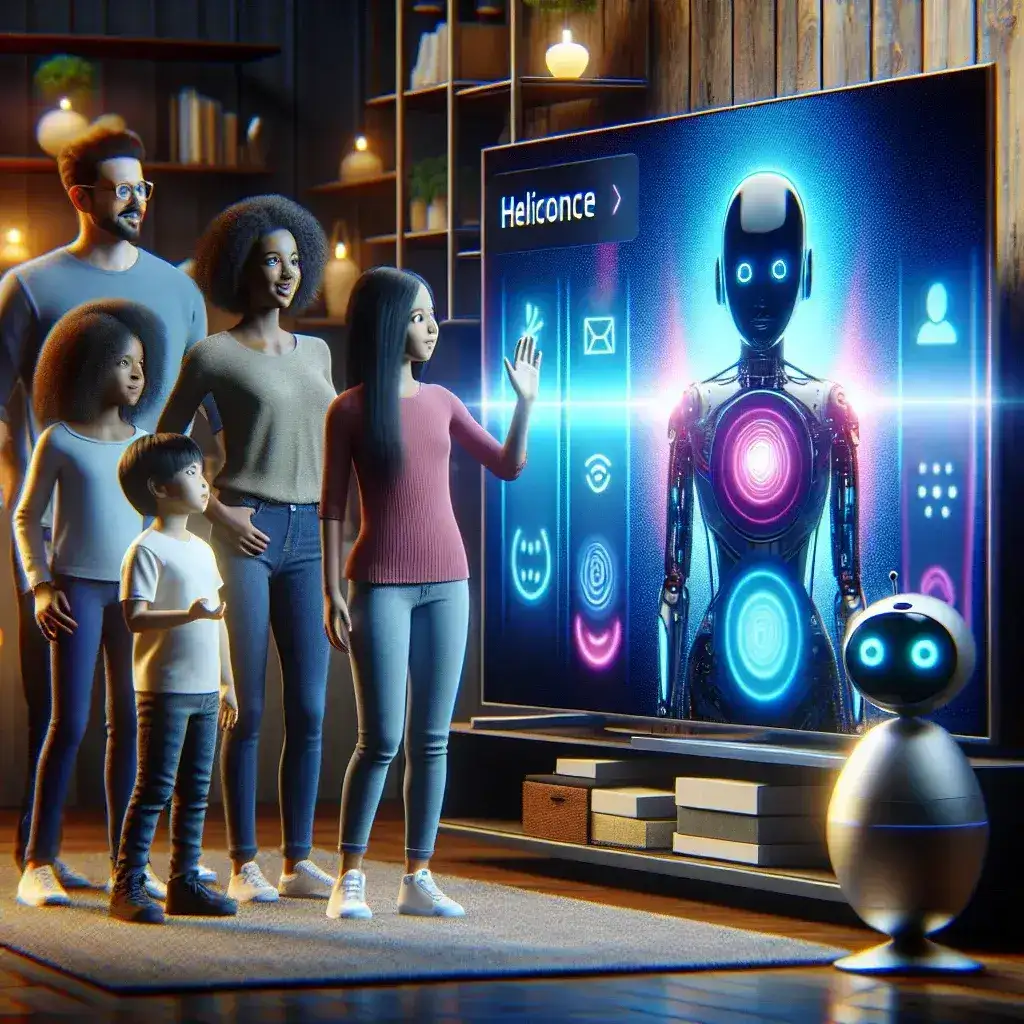Introduction
The landscape of television technology is continually evolving, and Samsung’s Tizen TV platform is at the forefront of this transformation. Recently, Samsung announced an innovative upgrade—gesture-based navigation powered by artificial intelligence (AI). This advancement aims to revolutionize the way viewers interact with their TVs, allowing for a more intuitive and immersive experience. In this article, we will delve into the details of this new feature, its implications, and its potential impact on the future of home entertainment.
The Rise of Gesture-Based Navigation
Gesture-based navigation is not entirely new; it has been seen in various devices, from gaming consoles to smartphones. However, its integration into smart TVs is a significant leap forward. Samsung’s Tizen TV takes this concept and enhances it with AI, allowing users to control their television using simple gestures, such as waving their hands or pointing.
Historical Context
The journey of gesture recognition technology dates back to the early 2000s when it began to gain traction in the gaming industry. Devices like the Nintendo Wii introduced motion controls, making gaming more interactive. As technology advanced, we witnessed the rise of smart home devices, which began to incorporate gesture-based controls. Samsung’s Tizen TV is now taking this technology to the living room, making it not just a tool for gaming but a part of everyday entertainment.
How It Works
Samsung’s gesture-based navigation system utilizes advanced AI algorithms that interpret the user’s movements with high precision. The system requires no additional hardware; the built-in camera on the TV detects gestures and responds accordingly. For example:
- Wave to Wake: Users can simply wave their hand in front of the TV to turn it on.
- Swipe for Selection: Swiping left or right can navigate through channels or apps.
- Pinch to Zoom: Users can pinch their fingers together to zoom in or out on content.
This level of interaction not only enhances user convenience but also aligns with the growing trend towards touchless technology, especially in the wake of global health concerns.
The Benefits of Gesture-Based Navigation AI
Enhanced User Experience
The primary advantage of integrating gesture-based navigation is the enhanced user experience. Viewers can interact with their TV in a way that feels natural and effortless. This can be particularly beneficial in a family setting where multiple users may want to control the TV without the need for a remote.
Accessibility
Gesture controls can also improve accessibility for users with disabilities. Individuals who may struggle with traditional remotes can benefit from a system that allows them to navigate their TV using simple hand movements.
Reduction of Clutter
As more functions are integrated into smart TVs, there is a growing concern about the clutter of remotes and other devices. Gesture-based navigation eliminates the need for physical controls, thus reducing clutter and streamlining the user interface.
Challenges Ahead
Accuracy and Reliability
While gesture-based systems hold great promise, they are not without challenges. One of the primary concerns is accuracy. The technology must be able to differentiate between intentional gestures and accidental movements. Samsung will need to refine its algorithms to ensure that the system is reliable in various lighting conditions and environments.
Learning Curve
Another potential drawback is the learning curve associated with a new method of interaction. Some users may find it difficult to adapt to gesture controls, especially those who are accustomed to using traditional remotes. Samsung will need to provide comprehensive tutorials and support to help users transition smoothly.
The Future of TV Interaction
As we look ahead, the integration of gesture-based navigation AI in Samsung’s Tizen TV could set a precedent for the entire industry. Other manufacturers may follow suit, leading to a wider adoption of gesture controls across various types of screens, including tablets and laptops.
Predictions for the Next Decade
In the next ten years, we can anticipate several developments:
- Improved Technology: As AI technology advances, the accuracy and responsiveness of gesture recognition will continue to improve.
- Integration with Other Smart Devices: Gesture controls could extend beyond the TV and be integrated with other smart home devices, creating a more cohesive smart home experience.
- Personalization: Future updates may allow for personalized gesture commands, enabling users to create custom gestures for their frequently used functions.
Conclusion
The addition of gesture-based navigation AI to Samsung’s Tizen TV marks a significant step forward in television technology. It encapsulates the growing trend towards more interactive and intuitive user experiences in the digital age. As Samsung continues to innovate and refine this technology, the potential for a seamless, hands-free interaction with home entertainment systems becomes more tangible. While challenges remain, the future of gesture-based navigation is bright, promising to reshape the way we enjoy our favorite shows and movies.
Call to Action
Are you ready to embrace the future of television interaction? Explore Samsung’s Tizen TV and discover how gesture-based navigation can elevate your viewing experience.




Leave a Reply